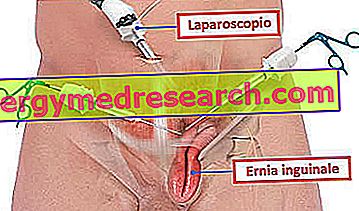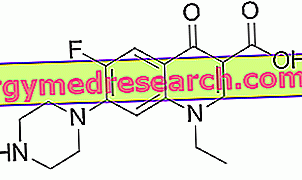
PLEASE NOTE: MEDICINAL PRODUCT IS NO LONGER AUTHORIZED
Characteristics of the medicinal product
Valtropin comes in the form of a white powder contained in a vial and solvent contained in a pre-filled syringe, from which a solution for injection is obtained. Valtropin contains the active substance somatropin.
Valtropin is a "biosimile product", ie it is similar to a biological drug already authorized in the EU that contains the same active ingredient (also called "reference product"). Valtropin has been compared with the reference product (Humatrope) and has been found to be equivalent in terms of quality (ie for production methods), safety (for example, the side effects that may occur during treatment are similar) and efficacy.
Therapeutic indications
Valtropin is used to treat children in the following cases:
• children who do not grow enough because they lack growth hormone (substitution therapy);
• children whose short stature is attributable to Turner syndrome (a rare genetic problem affecting females), confirmed by chromosomal analysis (DNA test);
• children before puberty, whose lack of growth is attributable to a long-standing kidney disease (chronic renal failure).
Valtropin is used to treat adults in the following cases:
• adult patients with a marked deficiency in growth hormone (which can be initiated both in childhood and in adulthood, and which must be confirmed by specific tests before treatment) (substitution therapy).
The medicine can only be obtained with a prescription.
Method of use
Treatment with Valtropin should be under the supervision of a doctor experienced in treating patients with growth problems. Valtropin is given by subcutaneous injection (under the skin), once a day. Valtropin can be injected directly by the patient or caregiver after receiving appropriate instructions from a doctor or nurse. The doctor calculates the dose for the individual patient based on body weight and problem; this dose may need to be corrected over time, based on weight changes and response. To avoid skin problems (lipoatrophy) the injection site must be changed frequently. The solvent supplied with Valtropin contains metacresol; metacresol allergic (hypersensitive) patients must prepare the solution using water for injections.
Mechanisms of action
Growth hormone is a substance secreted by the pituitary gland (a gland located at the base of the brain). This substance stimulates growth during childhood and adolescence, also acting on the way the body uses proteins, fats and carbohydrates. Somatropin, the active ingredient of Valtropin, is identical to the human growth hormone, and is produced by a method known as "recombinant DNA technology": this hormone is obtained from a yeast in which a gene (DNA) has been introduced which allows him to produce this hormone. Valtropin replaces the natural hormone.
Studies carried out
Valtropin has undergone studies aimed at demonstrating its similarity to the reference preparation, Humatrope. Valtropin has been compared with Humatrope in 149 children with growth hormone deficiency never treated before. The study lasted 12 months; the height of the children was measured at the beginning and the end of the study and the growth rate was measured during the study.
Benefits found following the studies
After 12 months of treatment, Valtropin and Humatrope caused similar increases in growth and growth rate (speed of +11.4 and +10.5 cm per year, respectively). Valtropin has been shown to be as effective as Humatrope.
Associated risks
The side effects observed with the administration of Valtropin were similar in type and severity to those observed with the administration of the reference preparation Humatrope. The most common side effects (seen in 1-10 patients in 100) are: in children, mild edema (fluid accumulation), transient skin reactions, low thyroid hormone levels; in adults, headache, edema, numbness, tingling, joint pain and disorders and muscle pain. Furthermore, like all protein drugs, Valtropin can cause the development of antibodies (proteins produced in response to the drug) in some patients. However, these antibodies have no growth inhibiting effect.
For the complete list of side effects reported with the use of Valtropin, see the package leaflet.
Valtropin should not be used in people who may be hypersensitive (allergic) to somatropin or any of the other ingredients (the solvent used for Valtropin contains metacresol). Valtropin should not be used in the presence of an active tumor or a potentially lethal disease. Valtropin should not be used to stimulate the growth of children with welded epiphyses (reached by long bones at the end of their growth). For a complete list of usage restrictions, see the package insert.
Somatropin may interfere with how the body uses insulin. During treatment, it is necessary to monitor blood sugar levels, sometimes starting an insulin therapy or correcting it if necessary.
Grounds for approval
The Committee for Medicinal Products for Human Use (CHMP) considered that, based on the provisions of the European Union regulations, Valtropin demonstrated quality, safety and efficacy characteristics similar to those of Humatrope. It is therefore the opinion of the CHMP that, as in the case of Humatrope, the benefits outweigh the risks identified.
Measures taken to ensure the safe use of Valtropin
The measures taken to ensure the safe use of Valtropin are closely linked to the reasons why the drug is used. The Valtropin manufacturer decided to study the drug's side effects in more detail (possible development of diabetes, reduced thyroid activity and possible effects of antibody development).
Further information
On 24 April 2006, the European Commission issued a marketing authorization valid throughout the European Union to BioPartners GmbH.
For the full Valtropin evaluation (EPAR), click here.
Last update of this summary: March 2006.



